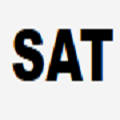MAX NAE-SAT is a natural optimization problem, closely related to its better-known relative MAX SAT. The approximability status of MAX NAE-SAT is almost completely understood if all clauses have the same size $k$, for some $k\ge 2$. We refer to this problem as MAX NAE-$\{k\}$-SAT. For $k=2$, it is essentially the celebrated MAX CUT problem. For $k=3$, it is related to the MAX CUT problem in graphs that can be fractionally covered by triangles. For $k\ge 4$, it is known that an approximation ratio of $1-\frac{1}{2^{k-1}}$, obtained by choosing a random assignment, is optimal, assuming $P\ne NP$. For every $k\ge 2$, an approximation ratio of at least $\frac{7}{8}$ can be obtained for MAX NAE-$\{k\}$-SAT. There was some hope, therefore, that there is also a $\frac{7}{8}$-approximation algorithm for MAX NAE-SAT, where clauses of all sizes are allowed simultaneously. Our main result is that there is no $\frac{7}{8}$-approximation algorithm for MAX NAE-SAT, assuming the unique games conjecture (UGC). In fact, even for almost satisfiable instances of MAX NAE-$\{3,5\}$-SAT (i.e., MAX NAE-SAT where all clauses have size $3$ or $5$), the best approximation ratio that can be achieved, assuming UGC, is at most $\frac{3(\sqrt{21}-4)}{2}\approx 0.8739$. Using calculus of variations, we extend the analysis of O'Donnell and Wu for MAX CUT to MAX NAE-$\{3\}$-SAT. We obtain an optimal algorithm, assuming UGC, for MAX NAE-$\{3\}$-SAT, slightly improving on previous algorithms. The approximation ratio of the new algorithm is $\approx 0.9089$. We complement our theoretical results with some experimental results. We describe an approximation algorithm for almost satisfiable instances of MAX NAE-$\{3,5\}$-SAT with a conjectured approximation ratio of 0.8728, and an approximation algorithm for almost satisfiable instances of MAX NAE-SAT with a conjectured approximation ratio of 0.8698.
翻译:暂无翻译



